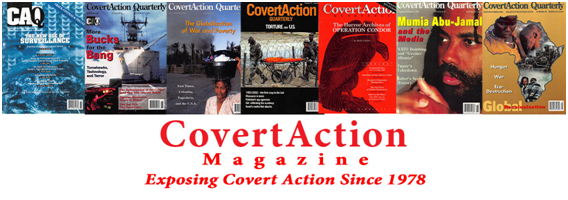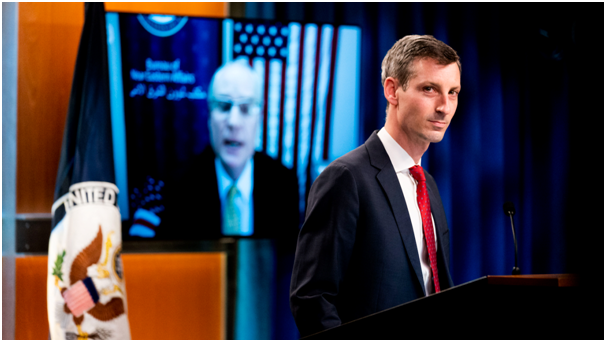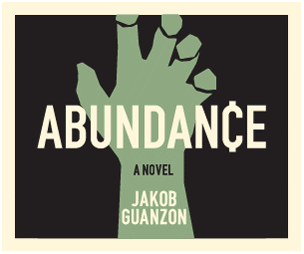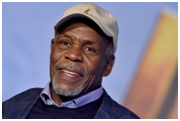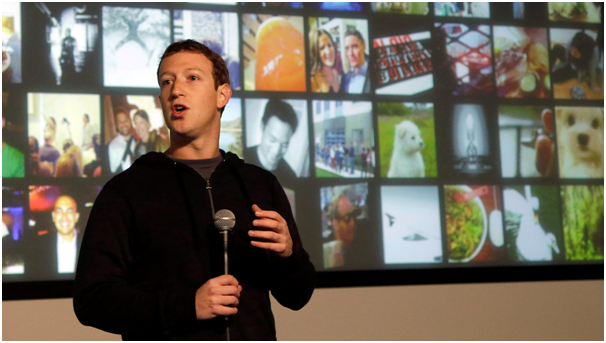Bulletin N° 965
"Can't Get You Out of My Head"
(February 11, 2021)
by Adam Curtis
-Part 1
“Bloodshed on
Wolf Mountain”
https://www.youtube.com/watch?v=MHFrhIAj0ME
(1:14:15)
-Part 2
“Shooting and
Fucking are the Same Thing”
https://www.youtube.com/watch?v=4I9nquHUE0Y
(1:14:02)
-Part 3
“Money Changes
Everything”
https://www.youtube.com/watch?v=OdnfOVT8DwY
(1:10:37)
-Part 4
“But
What If the People Are Stupid”
https://www.youtube.com/watch?v=NAWfUAN-220
(1:12:29)
-Part 5
“The Lordly
Ones”
https://www.youtube.com/watch?v=_4autLfdKE0
(1:04:57)
-Part 6
“Are We Pigeon
or Are We Dancer?”
https://www.youtube.com/watch?v=yv7NFn95R0s
(1:58:54)
Subject: “News from Nowhere” and organizing community action.
March 30, 2021
Grenoble, France
Dear Colleagues and Friends of CEIMSA,
In 2005, Andrew Postman published the 20th anniversary
edition of his father’s “prophetic” book, Amusing
Ourselves To Death, Public Discourse in the Age of Show Business
(1985), by Neil Postman, who died at the age of 72 in 2003.
I remember the impact this popular intellectual had during my
graduate student days, when I as a teaching assistant at the University of
Wisconsin at the time of the anti-war movement. Neil Postman’s radical critique of
schooling, Teaching
as a Subversive Activity, published with Charles Weingartner in 1969 was an early influence on my method
of teaching, and his later work was no less useful, when I was teaching next door to
Hollywood, in Southern California.
Postman’s radical social critiques represent a self-conscious
effort not to exaggerate, and at the same time a courageous determination to
formulate the deepest evaluation of U.S. culture using historical perspectives
of social behavior – both conscious and
unconscious – in the context of the political economy of late capitalism.
Amusing
Ourselves To Death began as a polemic weighing in on
the debate over the views of British dystopian works by George Orwell and Aldus
Huxley. While Orwell’s 1984 (published
in 1949) was a warning of being overcome by an externally imposed oppression,
Huxley’s vision in Brave New World
(published in 1932) was of a future population which came to love their
oppression and “adore the technologies that undo their capacities to think.”
The former feared those who would ban books, while the latter feared “there
would be no reason to ban a book, for there would be no one
who wanted to read one.” Orwell feared that the truth would be concealed from
us; Huxley thought that truth might get drowned in “a sea of irrelevance.”
Orwell predicted that we would become captives of culture; Huxley foresaw our
becoming a trivial culture. In 1984;
people are controlled by inflicting pain; in Brave New World, they are controlled by inflicting pleasure. Orwell
warned what we hate will ruin us; Huxley prophesied that what we love will
destroy us. As we shall see, Neil Postman has argued
in this book the case for Huxley, that it will be pleasure, and not pain,
which ruins us.(pp.xix-xx)
This book is divided into two parts: the first five chapters are a
discussion of the traditional values of “typographic culture” in the United
States, which the author calls The Age of
Exposition; the second part is six chapters devoted to the “electronic culture,”
dominated by television, which he calls The
Age of Show Business.
Below we will present the first chapters of this book, which if inspired by a materialist concept of history, some marxian readers might find it to be decidedly un-dialectical.
In Chapter 1, “The Medium is the Metaphor,” Postman discusses the
revolution that the written world represented in human existence.
That the alphabet introduced a new form of
conversation between man and man is by now a commonplace among scholars. To be
able to see one’s utterances rather than only to hear them is no small
matter, though our education, once again, has had little to say about this.
Nonetheless, it is clear that phonetic writing created a new conception of
knowledge, as well as a new sense of intelligence,
of audience and of posterity, all of which Plato recognized at an early stage in the development of texts.
‘No man of intelligence,’ he wrote in his Seventh Letter, ‘will venture to
express his philosophical views in language, “especially not in language that
is unchangeable, which is true of that which is set down in written characters.’
This notwithstanding, he wrote voluminously and understood better than anyone
else that the setting down of views in written characters would be the
beginning of philosophy, not its end. Philosophy cannot exist without
criticism, and writing makes it possible and convenient to subject thought to a
continuous and concentrated scrutiny. Writing freezes speech and in so doing
gives birth to the grammarian, the logician, the rhetorician, the historian,
the scientist – all those who must hold language before them so that they can
see what it means, where it errs, and where it is leading.
Plato knew all of this, which means that
he knew that writing would bring about a perceptual revolution; a shift from
the ear to the eye as an organ of language processing. Indeed, there is a
legend that to encourage such a shift Plato insisted that his students study
geometry before entering his Academy. If true, it was a sound idea, for as the
great literary critic Northrop Frye has remarked, ‘the written word is far more
powerful than simply a reminder: it re-creates the past in the present, and
gives us, not the familiarly remembered thing, but the glittering intensity of
the summoned-up hallucination.’
All that Plato surmised about the
consequences of writing is now well understood by anthropologists, especially
those who have studied cultures in which speech is the only source of complex
conversation. Anthropologists know that the written word, as Northrop Frye
meant to suggest, is not merely an echo of a speaking voice. It is another kind
of voice altogether, a conjurer’s trick of the first order. It must certainly
have appeared that way to those who invented it, and that is why we should not
be surprised that the Egyptian god Thoth, who is alleged to have brought
writing to the King Thamus, was also the god of
magic. People like ourselves may see nothing wondrous in writing, but our anthropologists
know how strange and magical it appears to a purely oral people – a
conversation with no one and yet with everyone. What could be stranger than the
silence one encounters when addressing a question to a text? What could be more
metaphysically puzzling than addressing an unseen audience, as every writer of
books must do? And correcting oneself because one
knows that an unknown reader will disapprove or misunderstand?
I bring all of this
up because what my book is about is how our own tribe is undergoing a vast and
trembling shift from the magic of writing to the magic of electronics. What I
mean to point out here is that the introduction into a culture of the technique
such as writing or a clock is not merely an extension of man’s power to bind
time but a transformation of his way of thinking – and, of course, of the content
of his culture. And that is what I mean to say by calling a medium a metaphor.
We are told in school, quite correctly, that a metaphor suggests what a thing
is like by comparing it to something else. And by the power of its suggestion,
it so fixes a conception in our minds that we cannot imagine the one thing
without the other. . . .
. . .
We
do not see nature or intelligence or human motivation or ideology as ‘it’ is,
but only as our languages are. And our languages are our media. Our media are
our metaphors. Our metaphors create the content of our culture.(pp.12-15)
In the second chapter, “Media as Epistemology,” Postman elaborates
on the purpose of his book.
It is my intention in this book to show
that a great media-metaphor shift has taken place in America, with the result
that the content of much of our public discourse has become dangerous nonsense.
With this in view, my task in the chapters ahead is straightforward. I must,
first demonstrate how, under the governance of the printing press, discourse in
America was different form what it is now –generally
coherent, serious and rational; and then how, under the governance of television,
it has become shriveled and absurd. But to avoid the possibility that my analysis
will be interpreted as standard-brand academic whimpering, a kind of elite
complaint against ‘junk’ on television, I must first explain that my focus is
on epistemology, not on aesthetics or literary criticism. Indeed, I appreciate
junk as much as the next fellow, and I know full well
that the printing press has generated enough to it to fill the Grand Canyon to
overflowing. Television is not old enough to have matched printing’s output of
junk.
And so, I raise no objection to
television’s junk. The best things on television are its junk, and no one and
nothing is seriously threatened by it. Besides, we do not measure a culture by
its output of undisguised trivialities, but by what it claims
is significant. Therein is our problem, for television is at its most
trivial and, therefore, most dangerous when its aspirations are high, when it
presents itself as a carrier of important cultural conversations. The irony
here is that this is what intellecutals and critics
are constantly urging television to do. The trouble with such people is that
they do not take television seriously enough. For, like the printing press,
television is nothing less than a philosophy of rhetoric To talk seriously about
television, one must therefore talk of epistemology. All other commentary is in
itself trivial.
Epistemology is a complex and usually
opaque subject concerned with the origins and nature of knowledge. The part of
its subject matter that is relevant here is the interest it takes in
definitions of truth and the sources from which such definitions come. In
particular, I want to show that definitions of truth are derived, at least in
part, from the character of the media of communication through which information
is conveyed. I want to discuss how media are implicated in our epistemologies.
In the hope of simplifying what I mean by
the title of this chapter, media as epistemology, I find it fruitful to borrow
a word from Northrop Frye, who has made use of a principle he calls resonance.
‘Through resonance,’ he writes, ‘a particular statement in a particular context
acquires a universal significance.’
. . .
In addressing the question of the source
of resonance, Frye concludes that metaphor is the generate force – that is, the
power of a phrase, a book, a character, or a history to unify and invest with
meaning a variety of attitudes or experiences. Thus Athens becomes a metaphor
of intellectual excellence, wherever we find it; Hamlet, a metaphor of brooding
inductiveness; Alice’s wanderings, a metaphor of a search for order in a world
of semantic nonsense.
. . .
Every
medium of communication, I am claiming, has resonance, for resonance is
metaphor writ large. Whatever the original and limited context of its use may
have been, a medium has the power to fly far beyond that context into new and
unexpected ones. Because of the way it directs us to organize our minds and integrate
our experience of the world, it imposes itself on our consciousness
and social institutions in myriad forms. It sometimes has the power to become implicated
in our concepts of piety, or goodness, or beauty. And it is always implicated
in the ways we define and regulate our ideas of truth.(pp.16-18)
. . .
…
[T]he concept of truth is intimately linked to the biases of forms of
expression. Truth does not, and never has, come unadorned. It must appear in
its proper clothing or it is not acknowledged, which is a way of saying that
the ‘truth’ is a kind of cultural prejudice. Each culture conceives of it as being
most authentically expressed in certain symbolic forms, that another culture
may regard a trivial or irrelevant. Indeed, to the Greeks of Aristotle’s time,
and for two thousand years afterward, scientific truth was best discovered and
expressed by deducing the nature of things from a set of self-evident premises,
which accounts for Aristotle’s believing that women have fewer teeth than men,
and that babies are healthier if conceived when the
wind is in the north. . . . (p.23)
. . .
…I
should not like to be understood as making a total assault on television.
Anyone who is even slightly familiar with the history of communications knows
that every new technology for thinking involves a trade-off. It giveth and taketh away, although
not quite in equal measure. Media change does not necessarily result in equilibrium.
It sometimes crates more than it destroys. Sometimes, it is the other way around.
We must be careful in praising or condemning because the future may hold
surprises for us. The invention of the printing press itself is a paradigmatic
example. Typography fostered the modern idea of individuality, but it destroyed
the medieval sense of community and integration. Typography created prose but
made poetry into an exotic and elitist form of expression. Typography made
modern science possible but transformed religious sensibility into mere superstition.
Typography assisted in the growth of the nation –state but thereby made patriotism
into a sordid if not lethal emotion.
Obviously, my point of view is that the
four-hundred-year imperial dominance of typography was of far greater benefit
than deficit. Most of our modern ideas about the uses of the intellect were
formed by the printed word, as were our ideas about education, knowledge, truth
and information. I will try to demonstrate that as typography moves to the
periphery of our culture and television takes its place at the center, the
seriousness, clarity and, above all, value of public discourse dangerously
declines. On what benefits may come from other directions, one must keep an
open mind.(p.29)
“Typographic America” is the title of chapter 3, in which the
author describes the influence of the printed word on U.S. culture. In summary,
he writes,
The point all this is leading to is that from
its beginning until well into the nineteenth century, America was as dominated
by the printed word and an oratory based on the printed word as any society we
know of. This situation was only in part a legacy of the Protestant tradition.
As Richard Hofstadter reminds us, America was founded by intellectuals, a rare
occurrence in the history of modern nations. ‘The Founding Fathers,’ he writes,
‘were sages, scientist, men of broad cultivation, many of them apt in classical
learning, who used their wide reading in history, politics, an d law to solve
the exigent problems of their time.’ A society shaped by such men does not
easily move in contrary directions. We might even say that America was founded
by intellectuals, from
which it has taken two centuries and a
communications revolution to recover. Hofstadter has written convincingly of
our efforts to ‘recover,’ that is to say, of the anti-intellectual strain in American
public life, but he concedes that his focus distorts the general picture. It is
akin to writing a history of American business by concentrating on the history of bankruptcies.
The influence of the printed word in every
arena of public discourse was insistent and powerful not merely because of the
quantity of printed matter but because of its monopoly. This point
cannot be stressed enough, especially for those who are reluctant to acknowledge
profound differences in the media environments of then and now. (pp.40-41)
The liberal critique of U.S. intellectual history in this chapter
concludes with a reference to Karl Marx.
But obviously I do not mean to say that
print merely influenced the form of public discourse. That does not say much
unless one connects it to the more important idea that form will determine the
nature of content. For those readers who may believe that this idea is too ‘McLuanesque’ for their taste, I offer Karl Marx for The German
Ideology. ‘Is the Iliad possible,’ he asks rhetorically, ‘when the printing
press and even printing machines exist? Is it not inevitable that with the
emergence of the press, the singing and telling and the muse cease; that is,
the conditions necessary for epic poetry disappear.’ Marx understood well that
the press was not merely a machine but a structure for discourse, which both
rules out and insists upon certain kinds of content and, inevitably, a certain kind
of audience. He did not, himself, fully explore the matter, and others have
taken up the task. I too must try my hand at it – to explore how the press
worked as a metaphor and an epistemology to create a serious and rational
public conversation, from which we have now been so dramatically separated.(pp.42-43)
In Chapter 4, “The Typographic Mind,” Postman begins with a
lengthy description of syntax and the 19th-century oratory style in
the public debates of Abraham Lincoln and Stephen A. Douglas 1850s.
I choose the Lincoln-Douglas debates as a starting
point for this chapter not only because they were the preeminent example of political
discourse in the mid-nineteenth century but also because they illustrate the
power of typography to control the character of that discourse. Both the
speakers and their audience were habituated to a kind of oratory that may be
described as literary. For all of the hoopla and socializing surrounding the event,
the speakers had little to offer, and audiences little to expect, but language.
And the language that was offered was clearly modeled on the style of the written
word. To anyone who has read what Lincoln and Douglas said, this is obvious
from beginning to end. The debates opened, in fact, with Douglas making the
following introduction, highly characteristic of everything that was said afterward:
‘Ladies and Gentlemen: I appear before you today for the purpose
of discussing the leading political topics which now agitate the public mind.
By an arrangement between Mr. Lincoln and myself, we are present here today for
the purpose of having a joint discussion, as the representatives of the two
great political parties of the State and Union, upon the principles in issue
between those parties, and this vast concourse of people shows the deep feeling
which pervades the public mind in regard to the questions dividing us.’(pp.48-49)
. . .
At one point in the middle of his speech, Douglas reproached his
audience:
He
claimed that his appeal was to understanding and not to passion, as if the
audience were to be silent, reflective readers and his language the text which
they must ponder. Which brings us, of course, to the questions, What are the implications for public discourse of a written,
or typographic, metaphor? What is the character of its content? What does it
demand of the public? What uses of the mind does it favor?
One
must begin, I think, by pointing to the obvious fact that the written word, and
an oratory based upon it, has a content: a semantic, paraphrasable, propositional content. This may sound odd,
but since I shall be arguing soon enough that much of our discourse today has
only a marginal propositional content, I must stress the point here. Whenever language
is the principle medium of communication – especially language controlled by the
rigors of print – an idea, a fact, a claim is the inevitable
result. The idea may be banal, the fact irrelevant, the claim false, but there
is no escape from meaning when language is the instrument guiding one’s
thought. Though one may accomplish it from time to time, it is very hard to say
nothing when employing a written English sentence. What else is exposition good
for? Words have very little to recommend them except as carriers of meaning.
The shapes of written words are not especially
interesting to look at. Even the sounds of sentences of spoken words are rarely
engaging except when composed by those with extraordinary poetic gifts. If a sentence
refuses to issue forth a fact, a request, a question, an assertion, an
explanation, it is nonsense, a mere grammatical shell. As a consequence a
language-centered discourse such as was characteristic of eighteenth- and
nineteenth-century America tends to be both content-laden and serious, all the
more so when it takes its form from print.
It is serious because meaning demands to
be understood. A written sentence calls upon its author to say something, upon
its reader to know the import of what is said. And when an author and reader
are struggling with semantic meaning, they are engaged in the most serious
challenge to the intellect. This is especially the case with the act of
reading, for authors are not always trustworthy. They lie, they become confused,
they over-generalize, they abuse logic and sometimes, common
sense. The reader must come armed, in a serious state of intellectual
readiness.
. . .
…[A]lmost every scholar who has grappled
with the question of what reading does to one’s habits of mind had concluded
that the process encourages rationality ; that the sequential, propositional
character of the written word fosters what Walter Ong
calls ‘analytic managers of knowledge.’ To engage the written word means to
follow a line of thought, which requires considerable powers of classifying, inference-making
and reasoning. It means to uncover lies, confusions, and over-generalizations,
to detect abuses of logic and common sense. It also means to weigh ideas, to
compare and contrast assertions, to connect one generalization to another. To
accomplish this, one must achieve a certain distance from the words themselves,
which is, in fact, encouraged by the isolated and impersonal text. That is why
a good reader does not cheer an apt sentence or pause to applaud even an
inspired paragraph. Analytic thought is to busy for that, and too detached.
I do not mean to imply that prior to the
written word analytic thought was not possible. I am
referring here not to the potentialities of the individual mind but to the predispositions
of a cultural mind-set. In a culture dominated by print, public discourse tends
to be characterized by a coherent, orderly arrangement of facts and ideas. The
public for whom it is intended is generally competent to manage such discourse.
In a print culture, writers make mistakes when they lie, contradict themselves,
fail to support their generalizations, try to enforce illogical
connections. In a print culture, readers make mistakes when they don’t notice,
or even worse, don’t care.
In the eighteenth and nineteenth
centuries, print put forward a definition of intelligence that gave priority to
the objective, rational use of the mind and at the same time encouraged forms
of public discourse with serious, logically orders content. It is no accident
that the Age of Reason was coexistent with the growth of a print culture, first
in Europe and then in America. The spread of typography kindled the hope that
the world and its manifold mysteries cold at least be comprehended, predicted, and
controlled. It is in the eighteenth century that science -the preeminent
example of the analytical management of knowledge – begins its refashioning of
the world. It is in the eighteenth century that capitalism is demonstrated to
be a rational and liberal system of economic life, that religious superstition
comes under furious attack, that the divine right of kings is shown to be a
mere prejudice, that the idea of continuous progress takes hold, and that the
necessity of universal literacy through education becomes apparent.(pp. 49-52)
Postman concludes this discussion of the “typographic mind” and the
influence of the printed word with laudatory praise of the past.
The
name I give to that period of time during which the American mind submitted
itself to the sovereignty of the printing press the Age of Exposition.
Exposition is a mode of thought, a method of learning and a means of
expression. Almost all of the characteristics we associate with mature discourse
were amplified by typography , which has the strongest possible bias toward
exposition: a sophisticated ability to think conceptually, deductively and sequentially;
a high valuation of reason and order; an abhorrence of contradiction; a large
capacity for detachment and objectivity; and a tolerance for delayed response. Toward
the end of the nineteenth century, for reasons I am most anxious to explain,
The Age of Exposition began to pass, and the early signs of its replacement could
be discerned. Its replacement was to be the Age of Show Business.(p.63)
The fifth chapter of this book takes us up to the door of the
post-modern era and the Age of Show Business. Postman follows the metabolism of
this historic development.
Toward the middle years of the nineteenth
century, two ideas came together whose convergence provided twentieth-century
America with a new metaphor of public discourse. Their partnership overwhelmed
the Age of Exposition, and laid the foundation for the Age of Show Business.
One of the ideas was quite new, the other as old as the cave paintings of
Altamira. We shall come to the old idea presently. The new idea was that
transportation and communication could be disengaged from each other, that space was not an inevitable
constraint on the movement of information.
Americans of the 1800’s were very much
concerned with the problem of ‘conquering’ space. By the med-nineteenth
century, the frontier extended to the Pacific Ocean, and a rudimentary railroad
system, begun in the 1830’s, had started to move ‘people and merchandise across
the continent. But until the 1840’s, information could move only as fast as a
human being could carry it; to be precise, only as fast as train could travel, which, to be even more
precise, meant about thirty-five miles per hour. In the face of such a
limitation, the development of America as a national community was retarded. In
the 1840’s America was still a composite of regions, each conversing in its own
ways, addressing its own interests. A continent-wide conversation was not yet
possible.
The solution to these problems, as every
school child used to know, was electricity. To no one’s surprise, it was an
American who found a practical way to put electricity in the service of
communication and, in doing so, eliminated the problem of space one and for
all. I refer, of course, to Samuel Finley Breese Morse, America’s first true
‘spaceman.’ His telegraph erased state lines, collapsed regions, and, by
wrapping the continent in an information grid, created the possibility of a
unified American discourse
But at a considerable
cost. For telegraphy did something that Morse did not foresee when he
prophesied that telegraphy would make ‘one neighborhood of the whole country.’ It destroyed the prevailing definition of
information, and in doing so gave a new meaning to public discourse. Among the
few who understood this consequence was Henry David Thoreau, who remarked in Walden
that “We are in great haste to construct a magnetic telegraph from Main to Texas;
but Maine and Texas, it may be, have nothing important to communicate. . . .
. . .
The telegraph made a three-pronged attack
on typography’s definition of discourse, introducing on a large scale
irrelevance, impotence, and incoherence. The demons of discourse were aroused
by the fact that telegraphy gave a form of legitimacy to the idea of
context-free information; that is, to the idea that the value of information need
not be tied to any function it might serve in social or political
decision-making and action, but may attach merely to its novelty, interest, and
curiosity, a ‘thing’ that could be bought and sold irrespective of its uses or
meaning.(pp.64-65)
Postman
goes on to elaborate on this newly discovered function of information.
As Thoreau implied, telegraphy made
relevance irrelevant. The abundant flow of information had
very little or nothing to do with those to whom it was
addressed; that is, with any social or intellectual context in which their
lives were embedded. Coleridge’s famous line about water everywhere
without a drop to drink may serve as a metaphor of a decontextualized
information environment: In a sea of information, there was very little of it
to use . . . . The telegraph may have made the country into ‘one neighborhood,’
but it was a peculiar one, populated by strangers who knew nothing but the most
superficial facts about each other.
Since we live today in just such a neighborhood
(now sometimes called a ‘global village’), you may get a sense of what is meant
by context-free information by asking yourself the following question: How
often does it occur that information provided you on morning radio or
television, or in the morning newspaper, causes you to alter your plans for the
day, or to take some action you would not otherwise have taken, or provide
insight into some problem you are required to solve? For most of us, news of
the weather will sometimes have such consequences; for investors, news of the
stock market; perhaps an occasional story about a crime will do it, if by
chance the crime occurred near where you live or involved someone you know. But
most of our daily news is inert, consisting of information that gives us
something to talk about but cannot leads to any meaningful action. This fact is
the principal legacy of the telegraph. By generating an abundance of irrelevant
information, it dramatically altered what may be called the ‘information-action
ratio.’
In
both oral and typographic cultures, information derives its importance from the
possibilities of action. Of course, in any communication environment, input
(what one is informer about) always exceeds output (the probabilities of action
based on information). But the situation created by telegraphy, and then
exacerbated by later technologies, made the relationship between information
and action both abstract and remote. For the first time in human history,
people were faced with the problem of information glut, which means that
simultaneously they were faced with the problem of a diminished social and
political potency.
. . .
We may say then that the contribution of
the telegraph to public discourse was to dignify irrelevance and amplify impotence.
But this was not all: Telegraphy also made public discourse
essentially incoherent. It brought into being a world of broken time and broken
attention, to use Lewis Mumford’s phrase. The principal strength of the
telegraph was its capacity to move information, not collect it, explain it or
analyze it. In this respect, telegraphy was the exact opposite of typography.
. . .
Thus, to the reverent question posed by
Morse – What hath God wrought? – a disturbing answer
came back: a neighborhood of strangers and pointless quantity; a world of
fragments and discontinuities. God, of course, had nothing to do with it. And
yet, for all the power of the telegraph, had it stood alone as a new metaphor
for discourse, it is likely that print culture would have withstood its
assault; would, at least, have held its ground. As it happened, at almost
exactly the same time Morse was reconceiving the
meaning of information, Louis Daguerre was reconceiving
the meaning of nature; one might even say, of reality itself.
. . .
Of course both the need and the power to
draw nature have always implied reproducing nature, refashioning it to make it
comprehensible and manageable. The earliest cave paintings were quite possibly
visual projections of a hunt that had not yet taken place, wish fulfillments of
an anticipated subjection of nature. Reproducing nature, in other words, is a
very old idea. But Daguerre did not have this meaning of ‘reproduce’ in mind.
He meant to announce that the photograph would invest everyone with the power
to duplicate nature as often and whenever one liked. He meant to say he had
invented the world’s first ‘cloning’ device, that the
photograph was to visual experience what the printing press was to the written
word. (pp.67-71)
According to Postman, “the graphic revolution,” combined with the
electronic media, produced the “illusion of context.”
The new imagery, with photography at its
forefront, did not merely function as a supplement to language, but bid to
replace it as our dominant means of construing, understanding, and testing
reality. . . . The new focus on the
image undermined traditional definitions of information, of news, and to a
large extent of reality itself.
. .
.
In a peculiar way, the photograph was the
perfect complement to the flood of telegraphic news-from-nowhere that
threatened to submerge readers in a sea of facts from unknown places about strangers
with unknown faces. For the photograph gave a concrete reality to the strange-sounding
datelines, and attached faces to the unknown names. Thus it provided the illusion,
at least, that ‘the news’ had a connection to something within one’s sensory
experience. It created an apparent context for the ‘news of the day.’ And the
‘news of the day’ created a context for the photograph.
But the sense of context created by the partnership
of photograph and headline was, of course, entirely illusory.(pp.74-75)
The author goes on to emphasize that other “pseudo events” emerged
in American culture to fill the vacuum that electronic media had created.
It may be of some interest to note, in
this connection, that the crossword puzzle became a popular form of diversion
in America at just that point when the telegraph and the photograph had
achieved the transformation of news from functional information to decontextualized fact. This coincidence suggests that the
new technologies had turned the age-old problem of information on its head:
Where people once sought information to manage the real contexts of their
lives, now they had to invent contexts in which otherwise
useless information might be put to some apparent use. The crossword puzzle is
one such pseudo-context; the cocktail party is another; the radio quiz shows of
the 19390’s and 1940’s and the modern television game show are still others;
and the ultimate, perhaps, is the wildly successful ‘Trivial Pursuit,’ In one
form or another, each of these supplies an answer to the question, ‘What am I
to do with all these disconnected facts?’ And in one form or another
the answer is the same: Why not use them for diversion? For entertainment? To amuse yourself, in a
game? In [his book] The Image, Daniel Boorstin
calls the major creation of the graphic revolution the ‘pseudo-event,’ by which he means an event
specifically staged to be reported –like the press conference, say. I mean to
suggest here that a more significant legacy of the telegraph and the photograph
may be the pseudo-context. A pseudo-context is a structure invented to
give fragmented and irrelevant information a seeming use. But the use the
pseudo-context provides is not action, or problem-solving, or change. It is the
only use left of information with no genuine connection to our lives. And that,
of course, is to amuse. The pseudo-context is the last refuge, so to say, of a
culture overwhelmed by irrelevance, incoherence, and impotence.(pp.74-75)
The Age of Exposition receded slowly, according to Postman, but
The Age of Show Business was relentless and has eventually expanded into all
areas of U.S. cultural activities.
Of course, photography and telegraphy did
not strike down at one blow the vast edifice that was typographic culture. The habits
of exposition, as I have tried to show, had a long history and they held
powerful sway over the minds of turn-of-the-century Americans. In fact, the early
decades of the twentieth century were marked by a great outpouring of brilliant
language and literature. In the pages of magazines like American Mercury
and The New Yorker, in the novels and stories of Faulkner, Fitzgerald,
Steinbeck, and Hemingway, and even in the columns of the newspapers giants –
the Herald Tribune, the Times – prose thrilled with a vibrancy
and intensity that delighted ear and eye. But this was exposition’s nightingale
song, most brilliant and sweet as the singer nears the moment of death. It
told, for the Age of Exposition, not of new beginnings, but of an end. Beneath
its dying melody, a new note had been sounded, and photography and telegraphy
set the key. Theirs was a ‘language’ that denied interconnectedness, proceeded
without context, argued the irrelevance of history, explained nothing, and
offered fascination in place of complexity and coherence. Theirs was a duet of
image and instance, and together they played the tune of a new kind of public
discourse in America.
Each of the media that entered the
electronic conversation in the late nineteenth and early twentieth centuries followed the lead of the telegraph and the
photograph, and amplified their biases. Some, such as film, were by their
nature inclined to do so. Others, whose bias was rather toward the
amplification of rational speech – like radio – were overwhelmed by the thrust
of the new epistemology and came in the end to support it. Together, this
ensemble of electronic techniques called into being a new world – a peek-a-boo
world, where now this event, now that, pops into view
for a moment, then vanishes again. It is a world without much coherence or sense;
a world that does not ask us, indeed, does not permit us to do anything; a
world that is, like the child’s game of peek-a-boo, entirely self-contained.
But like peek-a-boo, it is also endlessly entertaining.
Of
course, there is nothing wrong with playing peek-a-boo. And there is nothing
wrong with entertainment. As some psychiatrist once put is, we all build
castles in the air. The problems come when we try to live in them. The
communications media of the late nineteenth and early twentieth centuries, with telegraphy and photography at their center,
called the peek-a-boo world into existence, but we did not come to live there
until television. Television gave the epistemological biases of the telegraph
and the photograph their most potent expression, raising the interplay of image
and insistency to an exquisite and dangerous perfection. And it brought them into
the home. We are by now well into a second generation of children for whom
television has been their first and most accessible teacher and for many, their
most reliable companion and friend. To put it plainly, television is the
command center of the new epistemology. There is no audience so young that it
is barred from television. There is no poverty so abject that it must forgo
television. And most important of all, there is no subject of public interest –
politics, new, education, religion, science, sports –
that does not find its way to television. Which means that all
public understanding of these subjects is shaped by the biases of television.
Television is the command center in
subtler was as well. Our use of other media, for example, is largely
orchestrated by television. Through it we learn what telephone system to use,
what movies to see, what books, records and magazines to buy, what radio
programs to listen to. Television arranges our communications environment for
us in ways that no other medium has the power to do.
. . .
At
the same time, television has achieved the status of ‘myth,’ as Roland Barthes
uses the word. He means by myth a way of understanding the world that is not
problematic, that we are not fully conscious of, that seems, in a word,
natural. A myth is a way of thinking so deeply embedded in our consciousness
that it is invisible. This is now the way of television. We are no longer
fascinated or perplexed by its machinery. We do not tell stories of its
wonders. We do not confine our television sets to special rooms. We do not
doubt the reality of what we see on television, are largely unaware of the
special angle of vision it affords. Even the question of how television affects
us as receded into the background. The question itself may strike some of us as
strange, as if one were to ask how having ears and eyes affects us. Twenty
years ago, the question, Does television shape culture or merely reflect it? held considerable interest for many scholars and social
critics. The question has largely disappeared as television has gradually become
our culture. This means, among other things, that we rarely talk about
television, only about what is on television – that is;,
about its content. Its ecology, which includes not only its physical
characteristics and symbolic code but the conditions in which we normally attend
to it, is taken for granted, accepted as natural.
Television has become, so to speak, the
background radiation of the social and intellectual universe, the
all-but-imperceptible residue of the electronic big bang of a century past, so familiar
and so thoroughly integrated with American culture that we no longer hear its
faint hissing in the background or see the flickering gray light. This, in
turn, means that its epistemology goes largely unnoticed. And the peek-a-boo world
it has constructed around us no longer seems even strange.
. . .
Our culture’s adjustment to the
epistemology of television is by now all but complete; we have so thoroughly accepted
its definitions of truth, knowledge, and reality that irrelevance seems to us
to be filled with import, and incoherence seems eminently sane. And if some our
out institutions seem not to fit the template of the times, why it is they, and
not the template, that seem to us disordered and strange.(pp.76-80)
From the expository presentations below,
we may be able to better see ourselves and understand the nature of our
alienation in order to envision a better future and evaluate what changes are necessary
to secure it.
Sincerely,
Francis Feeley
___
Professeur honoraire de l'Université Grenoble-Alpes
Ancien Directeur de
Researches
Université de Paris-Nanterre
Director of The Center for the Advanced Study
of American Institutions and Social Movements
(CEIMSA-in-Exile)
The University of California-San Diego
http://www.ceimsa.org
a.
Art -
transcendent, transformative, revolutionary
https://www.youtube.com/watch?v=6VniN_jQpxQ
with Chris Hedges and Dwayne Booth, aka Mr. Fish
(26:38)
+
“The War
Prayer”
by Mark Twain
Anyone
who believes that the mission and purpose of any nation’s military
is
noble and valiant, or at least benign, would do well to ponder
“The War Prayer.”
The
sole purpose of a military is to kill and destroy.
Often including non-combatants.
The
pictures below are from
the war between the states (Library of Congress collection),
but they may as well be from any military engagement.
The
War Prayer Dictated by Mark Twain [Samuel Clemens] in 1904
in
advance of his death in 1910. During his writing career,
he
had criticized perhaps every type of person or institution either
living or dead. But this piece was just a little too hot for his
family
to
tolerate. Since they believed the short narrative would be regarded
as
sacrilege, they urged him not to publish it. However, Clemens was
to
have the last word, and even the word after that. Having directed it
to
be published after his death, he said, "I have told the truth in
that . . . and only dead men can tell the truth in this
world."
--
William H. Huff
It was a time of great exulting and excitement. The country
was up in arms, the war was on, in every breast burned the holy fire of
patriotism; the drums were beating, the bands playing, the toy pistols popping,
the bunched firecrackers hissing and sputtering; on every hand and far down the
receding and fading spread of roofs and balconies a fluttering wilderness of flags
flashed in the sun; daily the young volunteers marched down the wide avenue gay
and fine in their new uniforms, the proud fathers and mothers and sisters and
sweethearts cheering them with voices choked with happy emotion as they swung
by; nightly the packed mass meetings listened, panting, to patriot oratory
which stirred the deepest depths of their hearts, and which they interrupted at
briefest intervals with cyclones of applause, the tears running down their
cheeks the while; in the churches the pastors preached devotion to flag and
country, and invoked the God of Battles, beseeching His aid in our good cause in
outpourings of fervid eloquence which moved every listener. It was indeed a
glad and gracious time, and the half dozen rash spirits that ventured to
disapprove of the war and cast doubt upon its righteousness straight way got
such a stern and angry warning that for their personal safety’s sake they
quickly shrank out of sight and offended no more in that way.
Sunday
morning came -- next day the battalions would leave for the front; the church was
filled; the volunteers were there, their young faces alight with martial dreams
-- visions of the stern advance, the gathering momentum,

"God the all-terrible! Thou who ordainest,
Thunder thy clarion and lightning thy sword!"
Then
came the "long" prayer. None could remember
the like of it for passionate pleading and moving and beautiful language. The
burden of its supplication was, that an ever-merciful and benignant Father of
us all would watch over our noble young soldiers, and aid, comfort, and
encourage them in their patriotic work; bless them, shield them in the day of
battle and the hour of peril, bear them in His mighty hand, make them strong
and confident, invincible in the bloody onset; help them to crush the foe,
grant to them and to their flag and country imperishable honor and glory -- An aged
stranger entered and moved with slow and noiseless step up the main aisle, his
eyes fixed upon the minister, his long body clothed in a robe that reached to
his feet, his head bare, his white hair descending in frothy cataract to his
shoulders, his seamy face unnaturally pale, pale even to ghastliness. With all
eyes following and wondering, he made his silent way; without pausing, he
ascended to the preacher’s side and stood there, waiting.

The
stranger touched his arm, motioned him to step aside -- which the startled
minister did --and took his place. During some moments he surveyed the
spellbound audience with solemn eyes, in which burned an uncanny light; then in
a deep voice he said:
"I
come from the Throne -- bearing a message from Almighty God!" The words
smote the house with a shock; if the stranger perceived it he gave no
attention. "He has heard the prayer of His servant your shepherd, and will
grant it if such be your desire after I, His messenger, shall have explained to
you its import -- that is to say, its full import. For it is like unto many of
the prayers of men, in that it asks for more than he who utters it is aware of
--except he pause and think.

"You
have heard your servant’s prayer -- the uttered part of it. I am commissioned
of God to put into words the other part of it -- that part which the pastor --
and also you in your hearts-- fervently prayed silently. And
ignorantly and unthinkingly? God grant that it was so! You heard these
words: ’Grant us victory, O Lord our God!’ That is sufficient. The whole of the
uttered prayer is compact into those pregnant words. Elaborations were not
necessary. When you have prayed for victory you have prayed for many
unmentioned results which follow victory -- must follow it, cannot help but
follow it. Upon the listening spirit of God the Father fell also the unspoken
part of the prayer. He commandeth me to put it into words.
Listen!
"O
Lord our Father, our young patriots, idols of our hearts, go
forth to battle -- be Thou near them! With them -- in spirit -- we also go
forth from the sweet peace of our beloved firesides to smite the foe. O Lord
our God, help us to tear their soldiers to bloody shreds with our shells; help
us to cover their smiling fields with the pale forms of their patriot dead;
help us to drown the thunder of the guns with shrieks of their wounded,
writhing in pain; help us to lay waste their humble homes with hurricanes of
fire; help us to wring the hearts of their unoffending widows with unavailing
grief; help us to turn them out roofless with their little children to wander unfriended the wastes of their desolated land in rags and
hunger and thirst, sports of the sun flames of summer and the icy winds of
winter, broken in spirit, worn with travail, imploring Thee for the refuge of
the grave and
denied
it -- for our sakes who adore Thee, Lord, blast their hopes, blight their
lives, protract their bitter pilgrimage, make heavy their steps, water their
way with tears, stain the white snow with the blood of their wounded feet!

Be all that you can be. WORK FOR PEACE
http://www.ratical.org/ratville/CAH/WarPrayer.html
+
America's Secret Government
with Chris Hedges and David Talbot
(27:10)
+
Politics is a Game of Fear
with Chris Hedges, Briahna Joy
Gray and Virgil Texas
(1:22:54)
+
The Raging Twenties: “Globalized Hell and Hope”
with Pepe Escobar
(35:30)
===========
b.
“Marx says we must change material conditions in order to change ideas.”
with David Harvey
(4:20)
+
Anti-Capitalist Chronicles:
How Capital Evolves
with David Harvey
(40:09)
+
How the U.S. is Able to Dictate to the Rest of the World
https://www.counterpunch.org/2021/03/14/how-the-u-s-is-able-to-dictate-to-the-rest-of-the-world/
by Pete Dolak
The United
States government is able to impose its will on all the world’s countries. The
rest of the world, even some of the strongest imperialist countries of the
Global North, lie prostrate at the feet of the U.S.
What is the source of this seemingly impregnable power? Which of course leads
to the next question: How long can it last?
+
“Bitcoin To Hit $220,000 This Year” predicts Max Keiser
https://www.youtube.com/watch?v=ZEdotUShvf8
with Jimmy Dore and Max Keiser
(41:30)
“Time to Rethink Market Capitalism?”
https://youtu.be/1g0nLGZIzhc
with Mark Carney, former governor of the Bank of Canada
(27:54)
===========
c.
From: Arthur Firstenberg
[mailto:info@cellphonetaskforce.org]
Sent: Saturday, March 27, 2021
Subject: Update on Satellites
“UPDATE ON SATELLITES”

https://www.5gspaceappeal.org/
|
|
Si
vous souhaitez vous désinscrire de notre newsletter, cliquez ici
+
From: Friends of the Earth
[mailto:foe@foe.org]
Sent: Saturday, March 27, 2021
Subject: Your Signature is Needed: Congress
putting polluters over climate action
|
===========
d.
From: Richard Greeman
[mailto:rgreeman@gmail.com]
Sent: Wednesday, March 24, 2021
Subject: Maati is
Free! Remise en liberté provisoire de Maati Monjib : Merci de votre soutien
Maâti Monjib is Free!
Wonderful news! Our campaign for justice
for Maâti Monjib in support
of his heroic hunger strike of 20 days has succeeded. THe
King of Morocco has changed prosecutors and Maâti has
been released from preventive detention and allowed to go to the hospital. It
is not clear if he has been still banned to travel. Here is London Review of BOoks article. https://www.lrb.co.uk/blog/2021/march/free-maati-monjib
We were all very worried and Maati still has a struggle to regain his health and fight
these charges. But our mobilization certainly helped.
Solidarity!! Richard
___________
Bonjour,
Le comité France de soutien à Maâti Monjib a appris avec joie
et soulagement sa libération provisoire ce mardi 23 mars 2021.
Cela faisait 19 jours que l’historien, journaliste et
militant des droits humains était en grève de la faim
pour dénoncer son arrestation arbitraire. Le comité se réjouit de cette
première victoire dans cette lutte menée par Maâti Monjib, sa famille, ses amis, les militants et les comités
de soutien. Il remercie tous ceux qui ont apporté leur soutien massif en
participant aux actions lancées par le comité France.
Le comité précise que le combat pour la
justice et la vérité n'est pas terminé tant que Maâti
Monjib n'est pas blanchi de toute accusation et tant
que des journalistes et citoyens seront détenus pour leurs opinions. Nous
aurons encore besoin du soutien de tous ! Nous restons mobilisés et solidaires.
Abdelaziz
===========
e.
How will the Suez Canal blockage disrupt global trade?
(25:15)
+
COVID-19 leading to global chip shortage within auto industry
with Natasha Sweatte
(3:20)
===========
f.
People gave up on flu pandemic measures a
century ago when they tired of them – and paid a price
by J. Alexander Navarro,
Assistant
Director of the Center for the History of Medicine, University of Michigan
+
UK Lockdown One Year On: It Doesn't Work,
It Never Worked,
& It Wasn't Supposed To Work
by Kit Knightly
===========
g.
China's Economic "Model"
with Richard Wolff
(7:53)
+
On China Becoming The
World Economic Leader & What It Means For The Average American
with Richard Wolff
(5:44)
+
China's rise unstoppable,
even for Biden
https://www.youtube.com/watch?v=ZBkGmasbbQ0&t=11s
with Richard Wolff
(25:51)
+
China, the Quad, and the Next
‘Great’ War
https://www.corbettreport.com/china-the-quad-and-the-next-great-war/
by James Corbett.
===========
h.
Welcome to shocked & awed 21st century
geopolitics
http://www.informationclearinghouse.info/56493.htm
by Pepe Escobar
+
Nord Stream 2 Sanctions Loom amid Major Russian Imports
with Ben Swann and Christy Ai
(7:53)
+
US Escalates New Cold War as Diplomatic
Gloves Come Off
https://www.mintpressnews.com/video-biden-escalates-china-cold-war-carl-zha-dan-choen/276379/
by Dan Cohen, with Carl Zha
(1:02:44)
US aggression against China and Russia sets the tone of
the Biden administration’s Cold War doctrine.
+
After 10 Years of Civil War in Syria,
US (Quietly) Declares Defeat but Won’t Go Home

https://www.mintpressnews.com/10-years-civil-war-syria-media-bias/276416/
by Alan Macleod
After a
decade of bombing, invasions, exoduses and economic strife, it is clear that
there are precious few winners in the Syrian Civil War — or from the rest of
the Arab Spring, for that matter.
+
US Gins Up a “Credible”
Iranian Nuclear Menace
Befitting Its Own Stockpile

https://www.mintpressnews.com/nuclear-war-us-intel-credible-iran-nuclear-menace/276404/
by Raul Diego
With Western intelligence sources once again stoking the flames of a
nuclear Iran and the secret movement of America’s nuclear warheads across
Europe, the war economy is up to its old tricks.
+
China Policy as “Political Theater"
with Richard Wolff
(8:08)
===========
i.
“WHO RULES THE WORLD?”
with Noam Chomsky
(45:58)
+
MSM silent on Biden’s health
with Manila Chan
(25:53)
+
Biden Backs Revival of His Brainchild: Plan Colombia 2.0 Set to Begin
Next Month

by Alan Macleod
Colombia is
set to return to a massive aerial campaign of spraying Monsanto’s glyphosate across the country, a plan Biden once fought
hard with his Republican colleagues to enact.
===========
j.
|
+ “Make HUMAN CLONING Great Again” + Viral Video Shows IDF Arresting Vegetable-Picking Palestinian Kids at
Behest of Israeli Settlers
|
|
by
Jessica Buxbaum “There
were [dozens] of soldiers around, and one of the soldiers dragged one of the
children to the vehicle and the other soldiers followed and started to arrest
them… We begged the soldiers to wait until the children’s families could come
and talk to their families, but that didn’t help.” |
===========
k.
Assange Defenders Starting New
Social Media App "PanQuake"
https://www.youtube.com/watch?v=riqYmPtNdhw
with Jimmy Dore
(24:32)
+
Flashmobs for Freedom – #SolutionsWatch
https://www.corbettreport.com/flashmobs-for-freedom-solutionswatch/
with James Corbett
(27:37)
===========
l.
From: CovertAction
Magazine [mailto:info@CovertActionMagazine.com]
Sent: Friday, March 26, 2021
Subject: War in Yemen: Grassroots Mobilization Pressured Biden
Administration to Pledge End of U.S. Involvement
|
+
Saudi Kingdom Embroiled in Terror Lawsuits
with Mike Papantonio
(12:02)
+
As Tide Turns, Houthis Reject
US, Saudi “Peace” Deals for the Recycled Trash They Are
https://www.mintpressnews.com/tide-turns-yemen-houthis-reject-us-saudi-peace-deal/276455/
by Ahmed Abdulkareem
The Houthis — empowered by six years of perseverance amid one
of the most violent wars against some of the world’s most powerful military
forces, not to mention the ability to reject the proposals set forth by those
same powers — have little incentive to accept Riyadh or Washington’s “peace”
offers.
+
US, Lobbyists
and Arm Dealers Scramble to Reposition Amid Impending
Saudi Defeat in Yemen
by Raul Diego
Recent
developments in the Yemen war are increasingly pointing to the possibility that
Biden’s ostensible moves towards peace may simply be an attempt to control the
narrative and save face around what is looking like yet another defeat in the
long-running American-sponsored global war on terror.
===========
m.
From: Jacobin [mailto:news@jacobinmag.com]
Sent: Thursday, March 11, 2021
Subject: Adam Curtis Talks to Jacobin
|
===========
n.
Why I ❤️ Rogers Waters' Amused To Death, by Uriah Heep's
Mick Box | Louder
https://www.loudersound.com/features/why-i-rogers-waters-amused-to-death-by-uriah-heeps-mick-box
by Fraser Lewry
+
The REAL White Devil
with reallygraceful
(19:14)
+
VP Harris criticized for attending women’s event with Bill Clinton
with Manila
Chan
(7:21)
Vice President Kamala Harris is being slammed for electing to appear with
former President Bill Clinton at a Clinton Global Initiative event. The event,
focusing on empowering women during the ongoing pandemic, is being chided as
tone deaf by many because of President Clinton’s questionable past, peppered
with allegations of sexual assault, harassment and his ties to infamous
pedophile Jeffrey Epstein.
+
Amnesty International: Facebook Plan To Target Children “Incompatible With Human Rights”
https://www.mintpressnews.com/instagram-facebook-children-human-rights/276355/
by Alan Macleod
Facebook itself “poses
one of the biggest threats when it comes to children’s privacy,” according to
the human rights organization.




